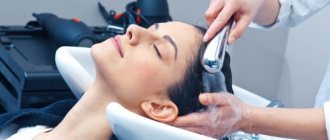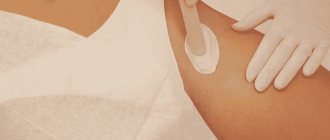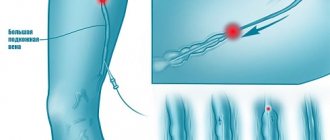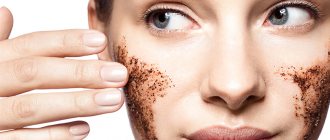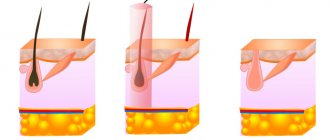Laser hair removal is an effective and long-term hair removal method. It has been successfully used in the world of beauty for over 20 years! Many women have already tried it on themselves and showed amazing results, others are just planning beauty sessions, collecting information bit by bit. As often happens with beauty procedures, laser hair removal has become surrounded by an incredible number of myths. We'll tell you what to believe and what not to believe when planning to get rid of unwanted hair on your body.
Myth 1: Laser hair removal is dangerous to health
There are quite a few new techniques in cosmetology, the safety of which is highly questionable. But laser hair removal has nothing to do with them. If the procedure is carried out correctly and on modern, working equipment, you should not expect negative consequences. The penetration depth of the device beam is only 1-4 mm, which means that it only reaches the hair follicle, destroying its structure. Then the light is scattered - penetration into tissue is excluded.
After the procedure, redness may occur similar to that which a person receives during the first tanning sessions on yarn. Soon it passes without a trace.
Which laser removes blonde hair?
Modern hardware technologies have learned to cope with complexity. Some techniques work with hairs with minimal melanin content:
| Laser type | Advantages | Flaws |
| Neodymium | Capable of removing vegetation without rich pigment. Short course of procedures. | High risk of burns and scarring. Soreness. |
| Neodymium with Q-switched | Laser hair removal for blonde hair without pain, few side effects. You can get rid of vegetation of any shade, even red or light color. Tanning is acceptable, skin color does not matter. | High cost; not all clinics use the technique. |
| Elos | Elos is suitable for hair removal of light hair. It destroys sprouts with low pigment. After the procedure, tanning is acceptable. | A long course, which significantly increases the cost of manipulation. |
| Ruby | The laser can effectively deal with vegetation of any shade. | Low radiation, high risk of burns and microtrauma. The sessions take a long time, and the surrounding tissues become very hot. |
| Alexandrite (Candela) | The safest laser hair removal, able to cope even with hormonal hair growth. Optimal wavelength, no risk of burns, no pain. | Works best with contrasting light skin and dark hair. |
| Diode | The technique is relatively effective and requires many sessions. | Painful sensations and a greater number of sessions compared to the alexandrite laser. |
To achieve maximum effect and lasting results, be sure to contact certified clinics. Specialists with medical education study the structure of the hair and determine whether the contrast between the skin and vegetation is sufficient.
Myth 2: You need to grow your hair before the procedure
This is only partly true. If you removed hair using wax, sugar paste or regular tweezers before the procedure, you will have to wait until the hairs grow back a little, since the hair shaft is the conductor for the laser beam to the hair follicle. If you have previously used shaving, laser hair removal can be performed at any time.
Myth 3: The procedure can be performed at home
This is true. In the beauty market you can now actually find devices for laser hair removal at home. For each person there is a device that differs in quality, range of action and pricing policy. But before you decide to buy, you should weigh the pros and cons. Laser hair removal is a rather complex procedure, and it must be carried out according to all the rules. Therefore, it is better to entrust it to a professional.
If you are sure that you can handle it yourself, at least buy certified products and carefully follow the instructions.
Types of procedures
During hair removal, the hair follicle itself is destroyed (that is, the hair along with the root), which prevents further growth.
The main methods of painless bikini hair removal include laser, chemical hair removal, bleaching and machine. Each has its own advantages and disadvantages, as well as features of use and contraindications.
Laser hair removal
The most modern and progressive method of removing unwanted body hair at the moment is the laser hair removal procedure. With it you can not only do bikini hair removal almost painlessly, but also forget about unwanted hair and irritation for quite a long time.
When using this method, you need to be very careful when choosing a master and studio/cosmetology clinic, study reviews of these establishments, and clarify the necessary permits and certificates. Masters must have confirmed qualifications and undergo training, the device must meet the standards. Otherwise, after attending a laser hair removal procedure, there is a risk of serious burns and age spots may appear.
You need to pay due attention to existing contraindications. This:
- various skin diseases;
- allergic skin rash;
- pregnancy and lactation;
- a large number of moles or neoplasms on the skin (can cause cancer);
- various mechanical damage to the skin (for example, burns, scratches, bruises);
- diabetes.
Before visiting a laser hair removal office, you should consult not only with the specialist, but also with a general practitioner or dermatologist.
A specialist will tell you how to numb the skin before bikini hair removal and not violate the rules of the procedure (for example, it is forbidden to use cosmetics immediately before the procedure).
There are several types of lasers that differ in the wavelength of the emitted light and the duration of the pulses. These include alexandrite, diode and neodymium laser.
To achieve long-term and visible results, it is necessary to undergo a course of laser hair removal procedures. It consists of 8-12 sessions every 4-6 weeks depending on hair type, skin, degree of hair growth, time of year and many other factors.
Chemical hair removal
Chemical hair removal occurs using special depilatory creams. The specially developed formula reaches the hair root and dissolves the keratin that makes up the hair.
It is not difficult to carry out this procedure at home. Need to:
- Evenly distribute the depilatory composition over the area of hair to be removed.
- Wait a while.
- Then remove the cream (or gel, depending on the company) along with the hairs with a special spatula (usually included in the kit).
And to carry out painless bikini hair removal, you can look for special series of products designed for this area.
The advantages of chemical hair removal include the speed and quality of the results obtained. However, there are a number of disadvantages:
- The composition may cause allergies or irritation.
- The product may have an unpleasant and pungent odor.
- Hair grows back much faster than using the previous method.
You also need to be careful when applying. The composition may cause itching and burning on the delicate mucous membrane of the bikini area.
Hair bleaching
Bleaching refers to the partial or complete removal of pigment from the hair structure. This procedure is carried out for this type of hair growth, when your hair is quite thin and delicate, not long and stiff. In this case, the hair itself is not removed, but the procedure must be repeated as the hair grows naturally.
Usually performed on women's hands, cheeks or other areas. It can also be carried out as painless bikini hair removal, if the hair structure is conducive to this. You can buy a special product at a cosmetic store or pharmacy, or you can prepare it yourself at home.
After the procedure, be sure to apply moisturizer to the skin. This will remove redness and possible skin irritation. The result is the desired visual effect without pain.
Machine hair removal
The good old way is to remove hair with a razor. Probably almost everyone has tried this method on themselves throughout their life. Using this method, you can do depilation of the intimate area at home painlessly and quickly.
The advantages include the speed and painlessness of the procedure, as well as low price and prevalence. In each store you can find many options for machines:
- with moisturizing pads;
- with a moving blade;
- reusable;
- travel disposables and many others.
Another good thing about this method is that if you can’t visit a beauty salon for a long time, a razor will always help if you need to “look like a million dollars.” However, razors can often cause skin irritation. Especially in such a delicate intimate area, where the skin requires a special approach. The method is also inconvenient because it requires almost daily repetition of the procedure. It is also inconvenient that you cannot cleanly work the entire area when performing a deep bikini.
Myth 4: After the procedure, scars will remain and hair will grow in
This myth arose among cosmetology “experts” who confuse laser hair removal with another type - electrolysis. In the second case, unsightly scars may indeed appear at the sites where the needle was inserted. Laser hair removal does not involve violating the integrity of the skin, which means scars cannot occur.
As for potential ingrown hairs, this is also excluded. Moreover, laser hair removal is precisely recommended as a method that eliminates this problem.
Myth 5: This is a painful procedure.
Each person has their own pain threshold and what may seem like mild discomfort to one may become a real challenge for another. Cosmetologists note that the sensations during the procedure are comparable to a click on the skin, and are usually tolerated normally. But when treating certain areas of the body - for example, the bikini area or armpits, you can use an anesthetic cream.
Photoepilation
Photoepilation is suitable for people of all ages. Unlike laser treatment, it allows you to work with hair of any color with the exception of gray and very light hair. After 3-6 sessions, you can achieve a lasting effect.
For photoepilation, a powerful source of light radiation is used, which is absorbed by melanin. This pigment is concentrated in the hair follicle - under the influence of heat it is destroyed.
Advantages:
- Safety. The skin is exposed to light similar in structure to sunlight, but devoid of harmful ultraviolet radiation;
- Rapidity. One flash affects 5 square meters. see, so one session takes only 5-30 minutes;
- Comfort. Photoepilation is accompanied by minimal pain;
- Suitable for any skin and hair phototype.
Absolute contraindications
- the same as for other types of hair removal:
- skin diseases;
- cardiovascular diseases;
- diabetes;
- varicose veins in the treated area;
- oncology;
- infectious diseases.
How to prepare?
Before photoepilation, it is important to properly treat your hair - this directly affects the result. 3 days before the session you need to shave the hair on your legs, 1-2 days in the armpits and bikini area.
How is photoepilation performed?
Before the session, the skin is treated with a cooling gel to prevent burns, the patient is asked to put on dark glasses and lie down on the couch.
After preparation is completed, processing begins. The clinic master, acting on the hair follicles with powerful short flashes of light, destroys them. During the process of photoepilation, the patient feels how the master runs a manipulator over the skin. Unpleasant sensations - burning and pain - are possible when treating the bikini area. To reduce discomfort, the master makes short intervals between outbreaks, inviting the client to breathe deeply during this time.
The final stage is removing the gel and applying a special cream or aerosol. The effect is not on each hair individually, but on a specific area of the skin, which significantly reduces the duration of the process.
After photoepilation, it is not recommended to go out in the sun for several days. Hair will fall out over the course of several weeks.
Expected effect
The problem of excess vegetation cannot be solved in one session. A specialist will recommend their exact quantity. However, the first session allows you to destroy about 30%. 100% result will be achieved after completing the photoepilation course. This method has a delayed effect, and the result depends on the qualifications of the specialist, the quality of the equipment, the power of exposure and the presence/absence of hormonal disorders in the client.
Myth 8: Laser work can lead to cancer
This myth is one of the popular “horror stories”. In fact, the patient’s history of oncology is a significant contraindication for the procedure. If there is any doubt about the nature of the formations on the skin, the cosmetologist will refuse the procedure until the circumstances are fully clarified.
At the moment, cosmetology has no evidence that laser beams can cause dangerous formations. As is known, a special type of ultraviolet rays has an oncogenic effect - 320-400 nm; this spectrum is not present in laser rays.
Myth 9: The procedure cannot be done in the summer
Removing excess hair on the body is especially important in the summer, when most people wear loose and short clothes. And therefore, the myth that laser hair removal cannot be practiced in the summer is perceived extremely painfully by patients. In fact, procedures can be scheduled during the “holiday season,” but there are some restrictions.
If you need to treat areas hidden under clothing - for example, the bikini area, there are no problems. The procedure can be performed at any time. “Treatment” cannot be carried out only on tanned skin, since there is a high probability of burns.
Myth 10: You can’t sunbathe after a beauty session.
This is another common “summer” myth. You can sunbathe after laser hair removal, but some time must pass after the procedure. The minimum “exposure” is 15 days, provided that there is no redness on your skin.
When sunbathing, be sure to use sunscreen, the layer of which on the body must be constantly renewed. This rule is especially important for those with sensitive skin.
Where to do hair removal?
The quality of the result largely depends on the skill of the specialist. When choosing between a clinic or salon and private masters, it is better to refuse the latter option. Even a procedure as simple at first glance as hair removal has a list of contraindications. Not every master will insist on an examination, and clients turn to private owners in order to save money. As a result, not only the effectiveness is called into question, but also the impact on health.
Criterias of choice:
- Ideally, the institution should have a medical profile. If you go to a salon, make sure that the technicians have the appropriate education and experience.
- You have the right to request a license to perform the selected type of procedure.
- The equipment must be certified. The use of modern, high-quality equipment directly affects safety.
- During the consultation, the specialist should talk in detail about the nuances of the procedure and answer your questions.
To get rid of unwanted hair, choose the type of hair removal that suits you, follow the specialist’s recommendations before and after the procedure. This way you will avoid complications and be satisfied with the result!
Myth 11: No additional care is needed after the procedure
After any type of hair removal, the skin requires additional care. For example, after removing hair with a razor, it is necessary to apply a soothing cream. There are also rules for care after laser hair removal.
For 3-5 days after the procedure, lubricate the treated areas with an aloe vera-based product; it will quickly soothe the affected area and promote a speedy recovery. For two weeks after beauty sessions, you should not visit the sauna, bathhouse, swimming pool, or any place where the skin may be exposed to moisture and heat. High-quality sunscreen cosmetics must be applied to exposed areas of the body.
ELOS hair removal
ELOS is known as a safe and painless method. Effective against dark, red, white and vellus hair.
The ELOS technique is considered the safest because the skin is maximally protected. It is based on a combination of two types of energy - light and current, which eliminates negative effects on the skin and the occurrence of side effects.
The area to be epilated is treated with a protective gel that improves the passage of current. Double cooling system minimizes discomfort.
ELOS can be done even before an important event, because after it there is no ingrown hair, as well as itching, rash and other signs of irritation. Unlike other hair removal methods, after the ELOS procedure you get absolutely smooth skin.
Contraindications:
- oncology;
- pregnancy and lactation;
- weakened immunity;
- diseases of internal organs;
- blood clotting disorder, etc.
Check with a specialist for the exact list of contraindications for ELOS hair removal.
How to prepare?
Two weeks before ELOS hair removal, stop visiting the solarium or sunbathing in the open sun. The presence of a tan on the skin will make the procedure less effective and create a risk of burns and age spots. It is recommended to shave the hair on the desired area of skin 2-3 days in advance.
How does ELOS hair removal work?
The first stage is the application of a protective gel, which will prevent the harmful effects of light flashes. Using the device, the specialist treats an area of skin. If pain occurs, an anesthetic gel can be used. Damaged hairs will fall out within a week.
Session duration is on average 30-40 minutes. This time period may increase or decrease depending on the area being treated.
Hair that will grow back after ELOS can be shaved, but cannot be pulled out using wax, sugar, epilator or tweezers.
Expected effect
To achieve ideal smooth skin, it is necessary to conduct 6-8 sessions of ELOS with an interval of about 2 months. It is during this period that “dormant” follicles are activated and need to be destroyed.
